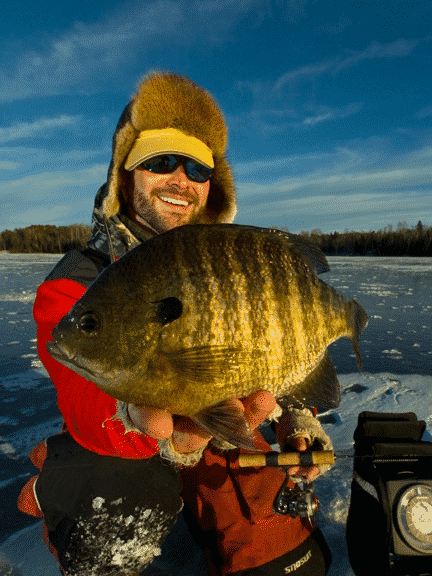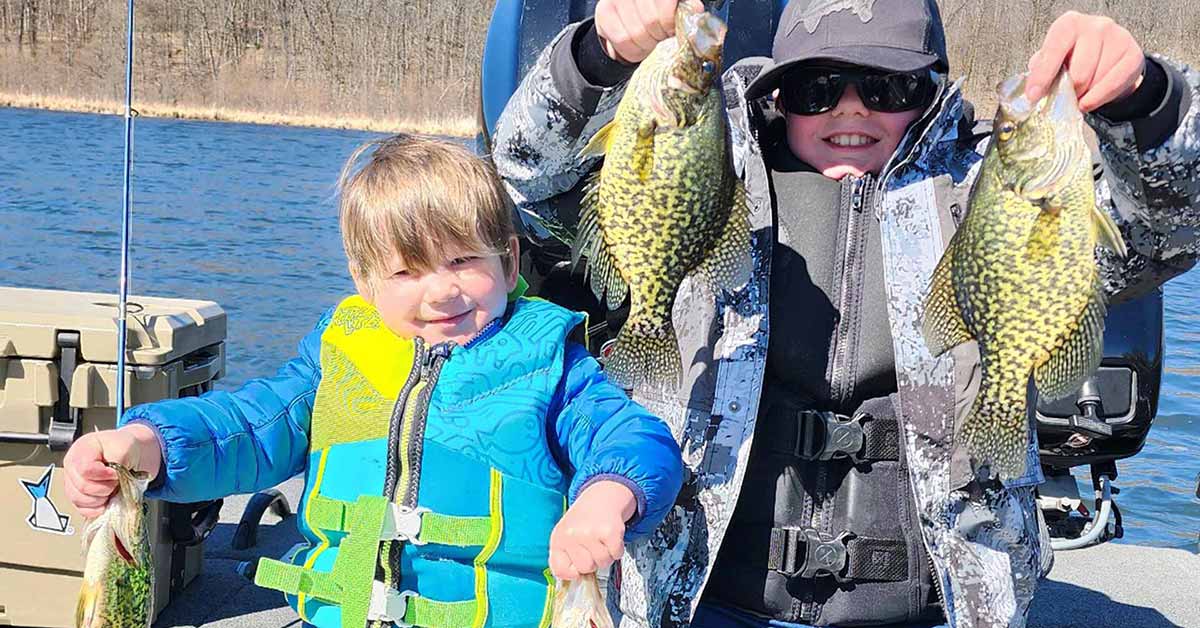As bays freeze, allowing safe foot traffic to weedy areas, ice anglers begin taking their first few tentative steps out across the frozen surface. Just don’t jump the gun. At least 4 inches of clear, solid ice is necessary for foot traffic. Tap an ice chisel on the ice ahead of you as you proceed, making sure the conditions are safe to proceed. If it punches through, ease on back the way you came. Either find another place to fish, or wait a few days for the ice to thicken.
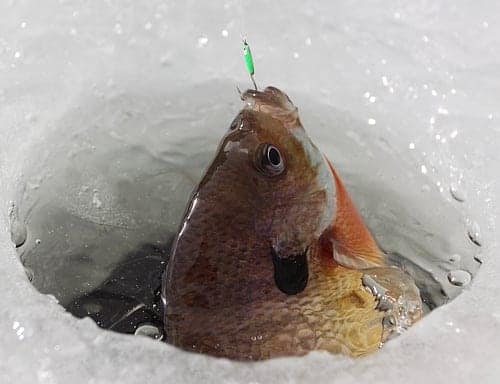
Prominent mainlake weedbeds and moderately deep weedy bays tend to draw the largest bluegills. Fish may be atop flats, along deep weedlines, or even lying in a deep carpet of sandgrass adjacent to the deepest tall weeds. So you have to do some hunting to find them. The good news is, you generally don’t have to fish too deep, so you can quickly check a variety of areas until you establish contact.
Use a small, lightweight, 6-inch hand auger or ice chisel to drill or chop a succession of holes, spanning the area from deep flats out to just beyond the deep weedline. Next, turn on your portable depth finder, and drop your transducer to establish the depth below your hole, and whether any weed cover is present. Once you determine the area has potential, use it to spot the presence and depth of fish.
Drop your lure down, and then reel up your bait so it’s right above their heads. Hold it there, then jiggle it up slightly, and hold again. Patience is a virtue; don’t be in a hurry to move it. In ice fishing, subtle movement attracts, but pauses indicate vulnerability and trigger the bite.
Underwater cameras greatly enhance your effectiveness and angling experience for finicky bluegills. There’s nothing quite like the confidence that comes with actually seeing fish, and how they react to variations in lure motion.
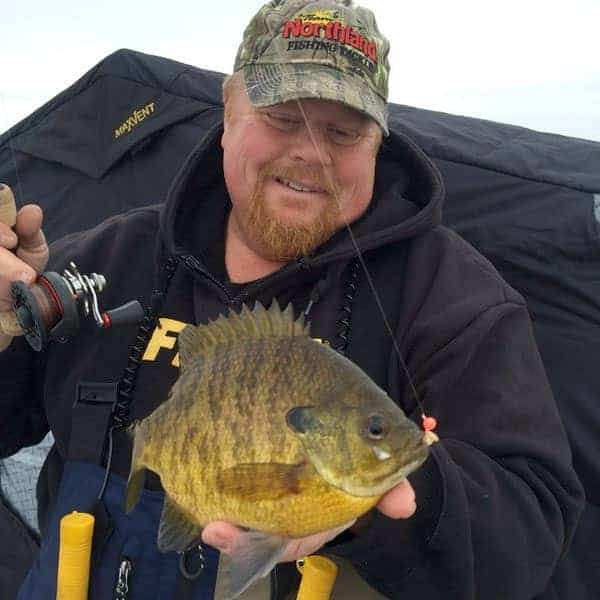
Bluegills have darned near microscopic vision, and often approach with inches and stare at your lures for long periods before deciding to ease in and lightly inhale your bait. But if anything looks phony—such as placing too much action on a lure, or using too heavy a line—they refuse to bite. That’s why panfish ice anglers often rely on 1- to 2-pound test monofilament line, teeny jigs tipped with live waxworms, and plenty of patience for bluegills. Dangle them near motionless, with only the occasional slight quiver to attract ‘gills to come in for a closer look; then try to hold them still to trigger fussy fish into biting.
Pint-sized softbaits are increasingly capturing the imagination of ice anglers, particularly for panfish. A growing number of panfish ice anglers are replacing minnows and grubs with tiny, flexible softbaits, roughly 1 to 1 1/2 inches in length, that retain their quivering, lifelike appearance, even in ultra-cold water.

Northland Fishing Tackle’s Bro Bug lineup is darned tough to beat. It features tiny jigheads with size #14 or #12 hooks, dressed with soft plastic imitations of natural forage items: Bro’s Bloodworm (reddish bloodworms), the Slug Bug (general insect larvae), and the Scud Bug (shrimp imitation). “Sometimes, the biggest bluegills, crappies and perch eat the smallest critters that camouflage themselves in drab colors,” says panfish expert and lure designer Brian Brosdahl of Max, Minnesota. “Especially in clear waters, where fish can detect the smallest faults in your presentation.”

VMC recently introduced a lineup of dense tungsten jigs, which have more compact profiles than lead jigs of similar weight, making them ideal for the small mouths of panfish. Jigs made from tungsten also drop more quickly into the fish zone, and are invaluable for fishing in deep water. They come in 1/64-, 1/32- and 1/16-ounce versions; stick to the two smaller sizes for ice fishing.
The bulbous Tungsten Tubby comes undressed; add a waxworm or small minnow as bait. 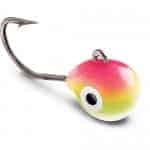
The pre-tied Tungsten Fly Jig resembles an insect. 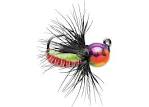
The Tungsten Wax Tail and Tungsten Nymph come pre-rigged with subtle Trigger X softbaits, which are also available separately.

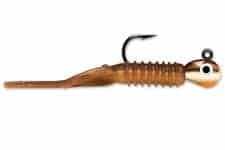
So is the intriguing Mustache worm, with is sort of a micro mini version of a stick worm, downsized and rigged sideways for teasing and tempting fussy panfish.
![]()
If you prefer traditional thread-on rigging, opt for the skinny Spike Tail.
VMC also offers even lighter-weight lead jigs tipped with softbait tails: the Waxy as light as 1/100-ounce; the Larvae as featherweight as 1/200- ounce; and the Wax Tail as light as miniscule as 1/100-ounce. If you’re fishing fairly shallow, their slower drop speed may entice eagle-eyed bluegills that lock in and follow their descent.
